Let me not to the Marriage of True Minds
Sonnet 116, William Shakespeare
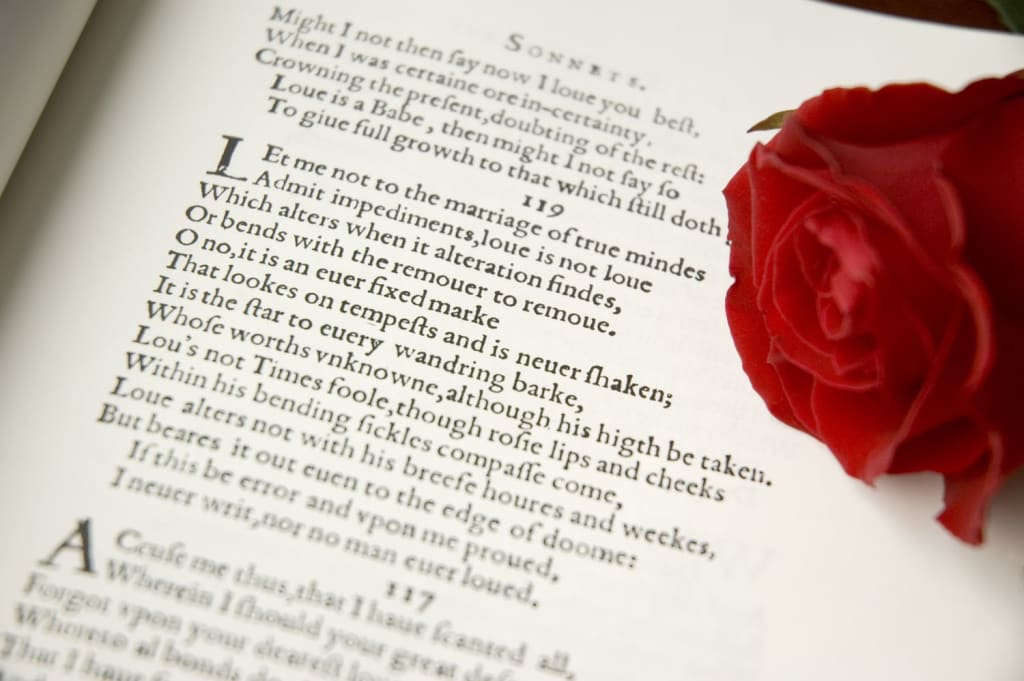
Let me not to the Marriage of True Minds
Poem Summary :
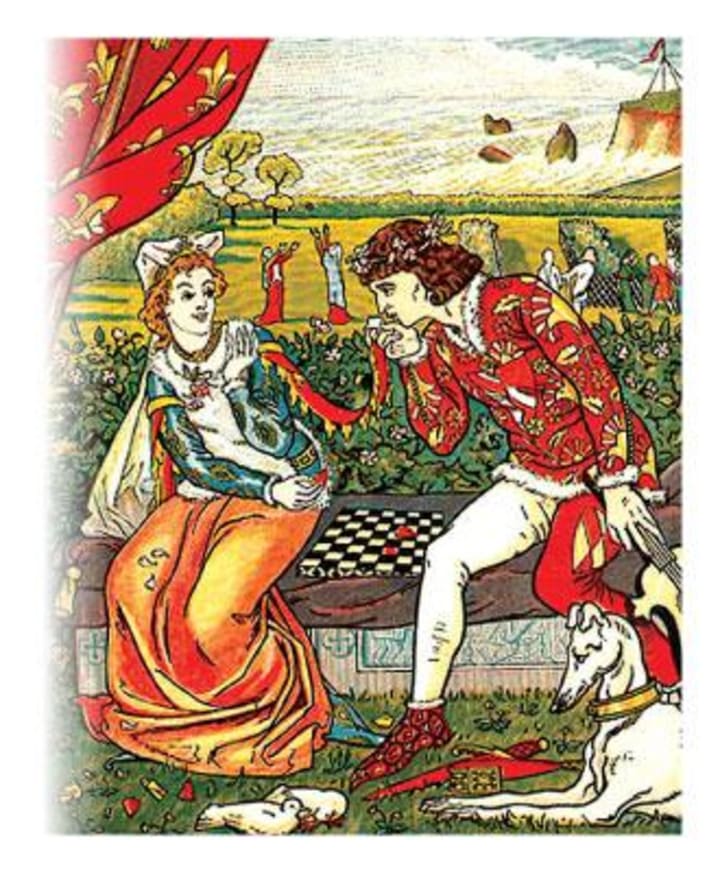
One of Shakespeare's well-known sonnets, "Let me not to the Marriage of True Minds," is written to the poet's unknown young acquaintance, "Mr. W. H." This sonnet has three quatrains, a rhyming couplet, and is written in perfect Shakespearean form. It rhymes with abab, cdcd, efef, and gg.
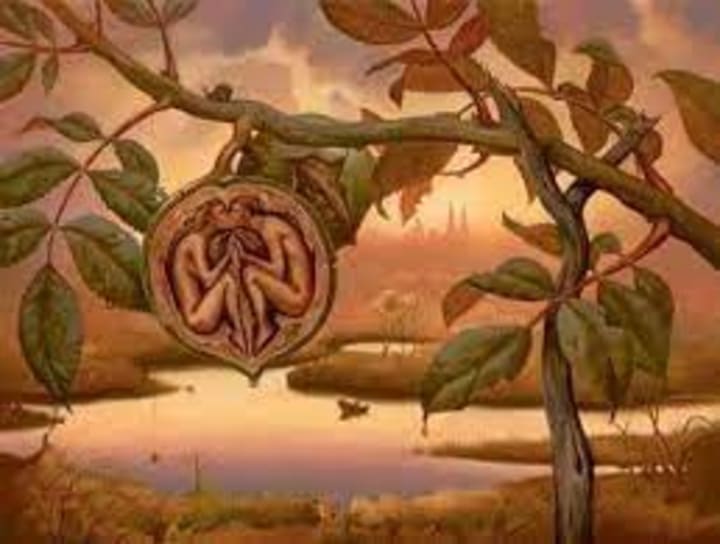
Shakespeare outlines the wonderful characteristics of real love in this sonnet. True love has been eloquently articulated by the poet. The poet asserts his belief in the strength of pure love by asserting that there cannot be any barriers to the union of sincere lovers. True love never changes. Even when there is a prospect of change, it never does. It does not yield to the might of its destroyer. To put it another way, the poet claims it has an unmatched level of consistency and steadfastness. True love never gives in to anyone's demands.
By contrasting the everlasting quality of genuine love with the sun and North star (Pole Star), which are constant and serve to direct roving ships in the unknown ocean, the topic of the poem is completely explored. In the same manner, genuine love supports its partners through life's challenges rather than giving in. Like the sun and the pole star in the cosmos, true love is unchanging and immovable.
Shakespeare claims that while time is a universal destroyer that destroys everything, pure love is unaffected by it. He makes a farming analogy with time. A farmer uses a sickle to harvest crops. In a same manner, aging robs a person of their natural attractiveness. It may bring out a woman's pink cheeks and lips. True love, however, does not exist inside the grasp of time's sickle. With time, nothing changes about it. Like the true worth and potential of the guiding star, the depth of love is something that can never be fully understood. Both the North Star and perfect love are immeasurable by human standards. To quantify them would be impossible. The ravages of time—death, decay, and destruction—have no bearing on true love, or spiritual love. However, it endures right up to the terrible day of judgment.
The poet concludes by making a statement. He claims that if anyone can disprove him, he would concede that neither he is a poet nor has anyone in this world ever loved him. It may be said that the topic of this sonnet has been presented elegantly and persuasively. True love is unwavering, eternal, and a source of direction for its lovers.
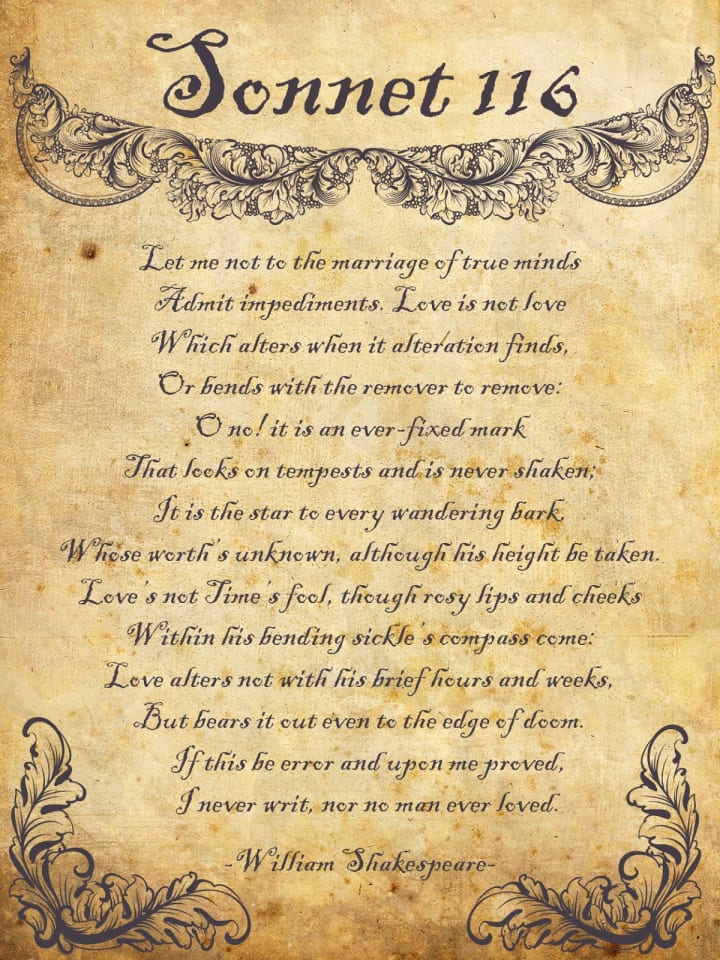
Sonnet : 116
Let me not to the marriage of true minds
Admit impediments. Love is not love
Which alters when it alteration finds,
Or bends with the remover to remove.
O no! it is an ever-fixed mark
That looks on tempests and is never shaken;
It is the star to every wand’ring bark,
Whose worth’s unknown, although his height be taken.
Love’s not Time’s fool, though rosy lips and cheeks
Within his bending sickle’s compass come;
Love alters not with his brief hours and weeks,
But bears it out even to the edge of doom.
If this be error and upon me prov’d,
I never writ, nor no man ever lov’d.
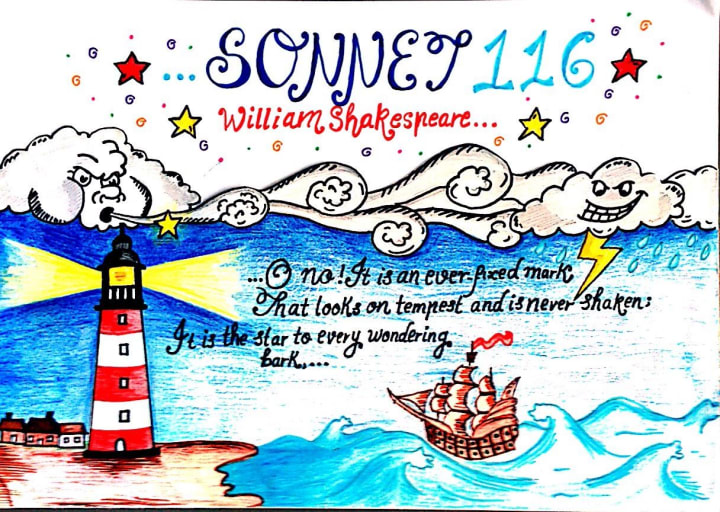
About the Creator
Enjoyed the story? Support the Creator.
Subscribe for free to receive all their stories in your feed. You could also pledge your support or give them a one-off tip, letting them know you appreciate their work.






Comments
There are no comments for this story
Be the first to respond and start the conversation.